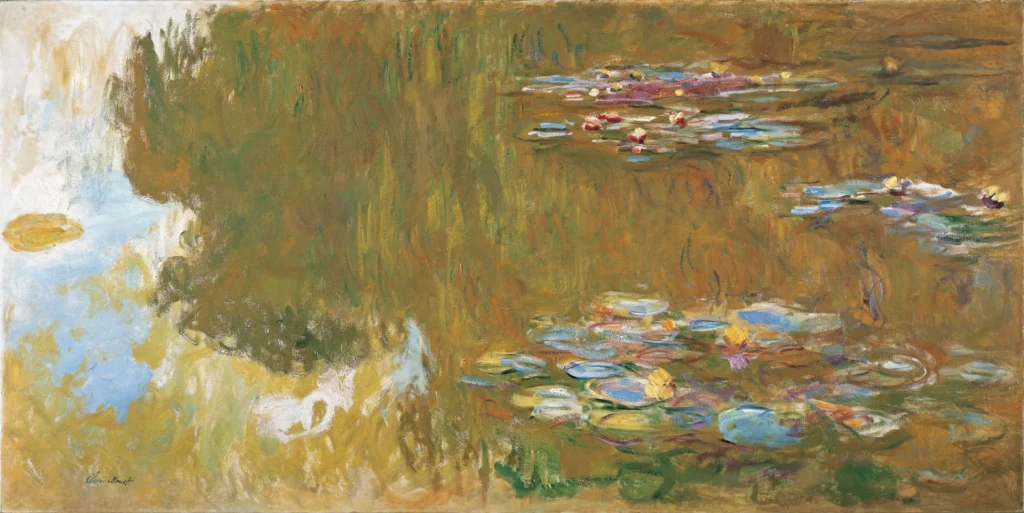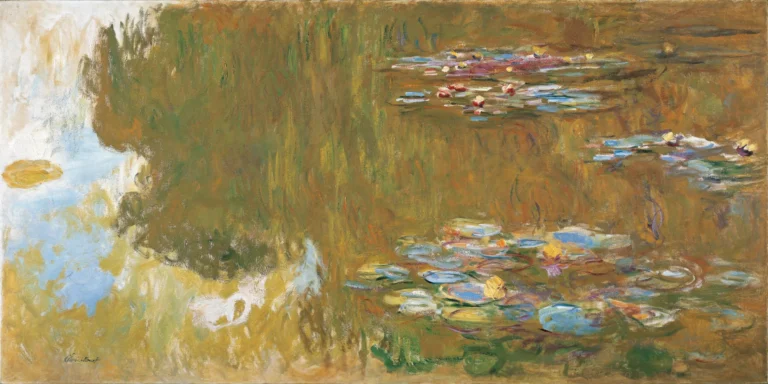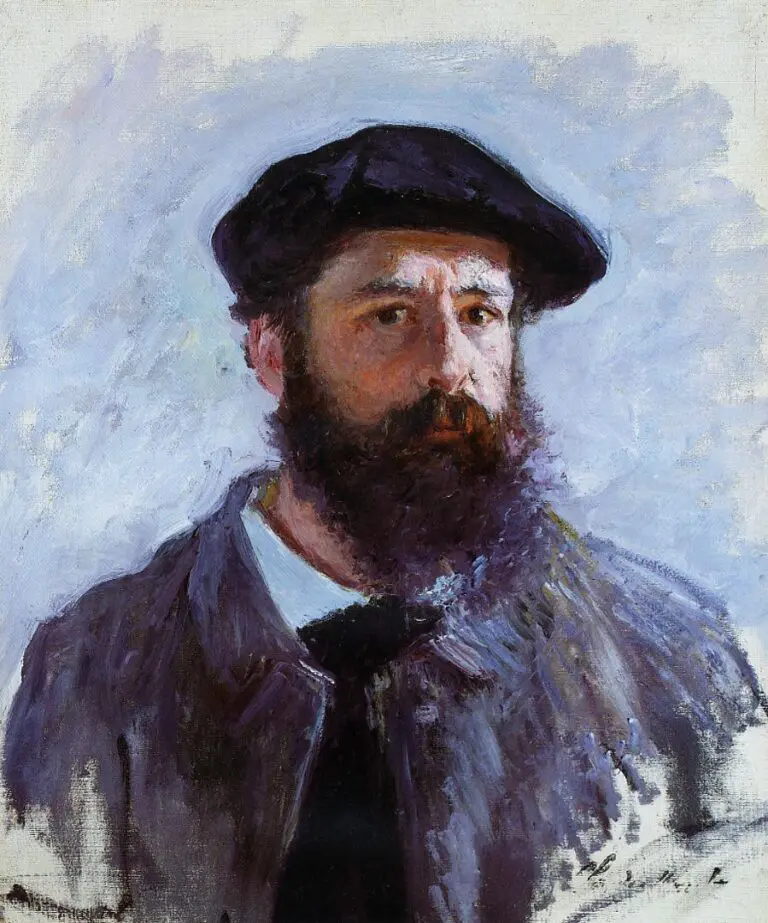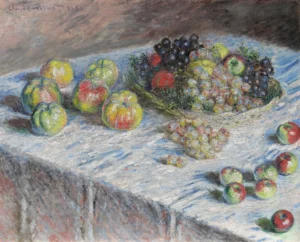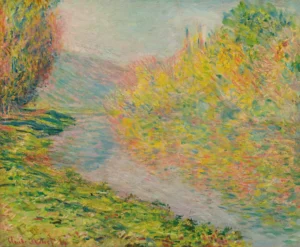The Water Lily Pond (1917-1919)
Created between 1917 and 1919, The Water Lily Pond is one of Claude Monet's celebrated works from his iconic water lily series. Executed in oil on canvas, this painting reflects the serene beauty of Monet’s water garden in Giverny, which was inspired by Japanese prints. While struggling with health issues and personal loss during World War I, Monet demonstrated his resilience and artistic genius through this breathtaking depiction that harmonizes light and color, marking his late career's significance.
1917 - 1919
About the Artwork
Did You Know
Liked what you see? Add it to your collection.
Enjoyed reading? Share it.
... continued
Location and Creation
The painting was created at Monet's property in Giverny, France, where he had developed an extensive water garden inspired by Japanese ukiyo-e prints. This garden served as an outdoor studio for many of his works.
Period of Creation
During World War I, Monet, despite his poor health and grief over the death of his second wife, embarked on a period of intense work. This period saw the creation of both monumental and smaller canvases of water lilies.
Technique and Medium
The painting is executed in oil on canvas. Monet often conceived these paintings outdoors and then reworked them in his studio, blurring the lines between observation and memory.
Dimensions
One of the versions of The Water Lily Pond from this period measures 130.2 × 201.9 cm (51 1/2 × 79 1/2 in.), with the framed dimensions being 147.4 × 218.5 × 9.9 cm (58 × 86 × 3 7/8 in.).
Collection
A version of The Water Lily Pond is part of the collection at The Art Institute of Chicago, gifted by Mrs. Harvey Kaplan in 1982.
Significance
This painting is one of many in Monet's series of water lily works, which he later offered to the French state. These paintings are iconic representations of Monet's late career and his unique approach to capturing light and color in his garden at Giverny.




